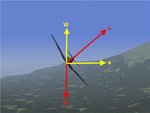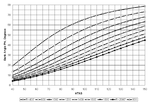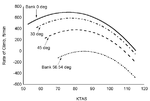The Spitfire got more power per unite than Fw-190 and its Wing Load much lower than Fw190 how do you guys possibly convinced that Fw.190 are capable to overwhelming the Spitfire?

Above is the wing load ranking list you can see.
How about listening to the opinion of a 32 kill ace: Would that change anything?:
http://img30.imageshack.us/img30/4716/jjohnsononfw190.jpg
Or Hurricane pilot John Weir:
"The Hurricane was more manoeuvrable than the Spit and, and the Spit was probably, we (Hurricane pilots) could turn one way tighter than the Germans could on a, on a, on a Messerschmitt, but the Focke Wulf could turn the same as we could and, they kept on catching up, you know."
Or(ad nauseam)...: -Squadron Leader Alan Deere, (Osprey Spit MkV aces 1941-45, Ch. 3, p. 2: "Never had I seen the Hun stay and fight it out as these Focke-Wulf pilots were doing... In Me-109s the Hun tactic had always followed the same pattern- a quick pass and away, sound tactics against Spitfires and their SUPERIOR TURNING CIRCLE. Not so these 190 pilots: They were full of confidence..."
8:1 for the FW-190As that day...
Note that all British and Soviet tests have widely indicated (especially the British ones), that there was NO significant differences in sustained turn rates between the Spitfire Mk V and the Mk IX, this even remaining true (with a bit of difficulty) at 30 000 ft...
So given that, the Johnny Johnson outcome above would have been nearly identical with a Mk IX... It is his tactics that were wrong...
The British Mk V/Mk IX tests even described that the only advantage the Mk IX could use, to gain the upper hand over the Mk V, was to use its tremendous climb rate on the vertical, and then dive on the Mk V... :
Spitfire IX Tactical Trials
Quote: "Manoeuvrability
20......... The Spitfire IX was compared with a Spitfire VC for turning circles and dog-fighting at heights between 15,000 and 30,000 feet. At 15,000 feet there was little to choose between the two aircraft although the superior speed and climb of the Spitfire IX enabled it to break off its attack by climbing away and then attacking in a dive. This manoeuvre was assisted by the negative 'G' carburettor, as it was possible to change rapidly from climb to dive without the engine cutting. At 30,000 feet there is still little to choose between the two aircraft in manoeurvrability, but the superiority in speed and climb of the Spitfire IX becomes outstanding. The pilot of the Spitfire VC found it difficult to maintain a steep turn without losing height, whereas the pilot of the Spitfire IX found that he had a large reserve of power which enabled him to maintain height without trouble. The all-round performance of the Spitfire IX at 30,000 feet is most impressive."
No doubt this is exactly the same tactics that were successfully used by the Mk IX to redress the balance with the FW-190A... NOT turn-fighting... Note Eric Brown's claim to the opposite from his own personal combat with the FW-190A proved so ineffective for both fighters, holding to their supposed respective "best" tactics, that they both decided to call it quits...
No hits, or even danger of hits, from either side is NOT a sign of effective use of their respective aircrafts... They called it quits because they were both getting nowhere, and of course the FW-190A is pathetic in vertical maneuvers, as the "sinking" dive pull-out and so-so climb rate should make obvious...
I'll re-iterate again that I am not argueing the Spitfire does not have a tighter unsustained turn radius than the FW-190A... The mistake here is to assume that this tighter radius necessarily translates into sustained turns when pulled from the nose over several 360s... It doesn't...
Gaston



